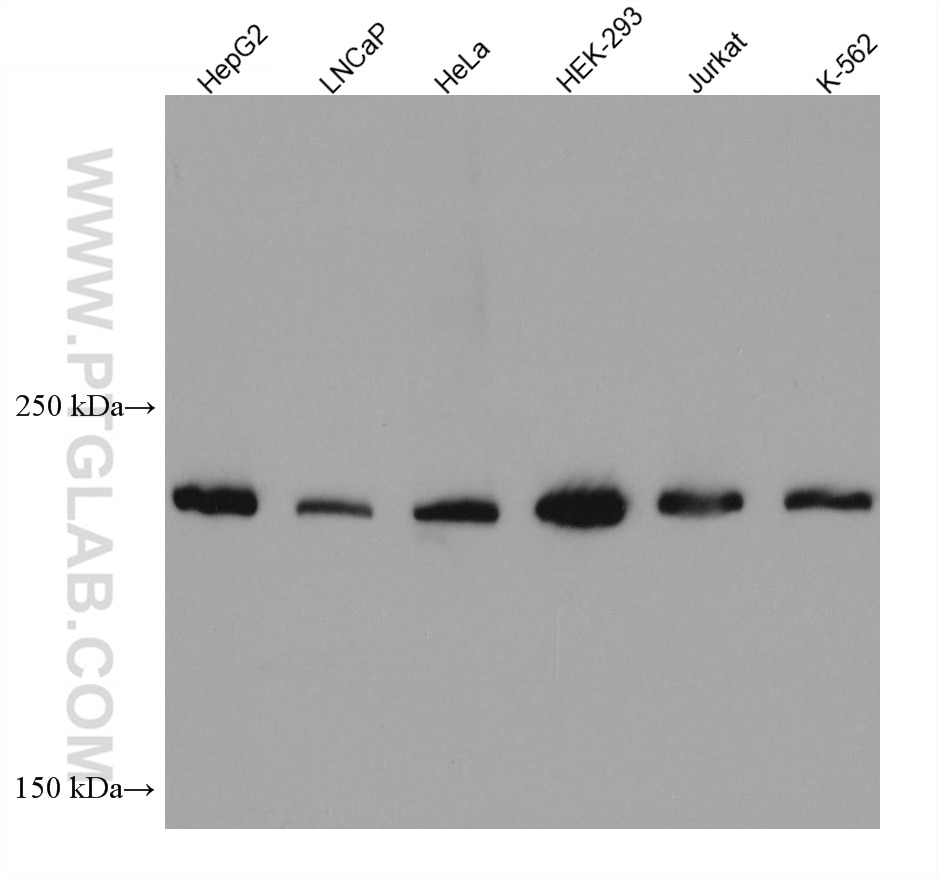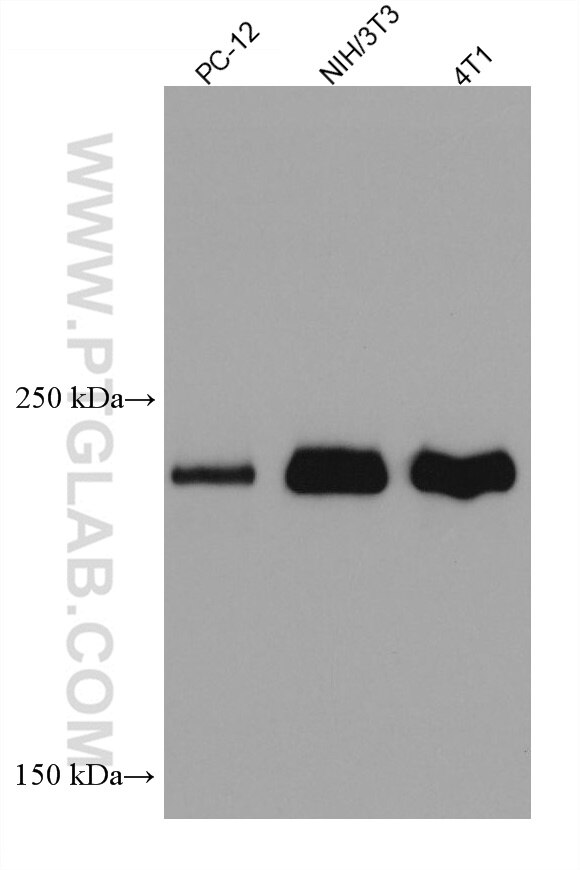DOCK7 Monoklonaler Antikörper
DOCK7 Monoklonal Antikörper für WB,ELISA
Wirt / Isotyp
Maus / IgG2b
Getestete Reaktivität
human, Maus, Ratte
Anwendung
WB,ELISA
Konjugation
Unkonjugiert
CloneNo.
1A4A6
Kat-Nr. : 67842-1-Ig
Synonyme
Galerie der Validierungsdaten
Geprüfte Anwendungen
| Erfolgreiche Detektion in WB | HepG2-Zellen, 4T1-Zellen, HEK-293-Zellen, HeLa-Zellen, Jurkat-Zellen, K-562-Zellen, LNCaP-Zellen, NIH/3T3-Zellen, NIH3T3-Zellen, PC-12-Zellen |
Empfohlene Verdünnung
| Anwendung | Verdünnung |
|---|---|
| Western Blot (WB) | WB : 1:5000-1:50000 |
| It is recommended that this reagent should be titrated in each testing system to obtain optimal results. | |
| Sample-dependent, check data in validation data gallery | |
Produktinformation
67842-1-Ig bindet in WB,ELISA DOCK7 und zeigt Reaktivität mit human, Maus, Ratten
| Getestete Reaktivität | human, Maus, Ratte |
| Wirt / Isotyp | Maus / IgG2b |
| Klonalität | Monoklonal |
| Typ | Antikörper |
| Immunogen | DOCK7 fusion protein Ag28417 |
| Vollständiger Name | dedicator of cytokinesis 7 |
| Berechnetes Molekulargewicht | 2109 aa, 239 kDa |
| Beobachtetes Molekulargewicht | 243 kDa |
| GenBank-Zugangsnummer | BC016392 |
| Gene symbol | DOCK7 |
| Gene ID (NCBI) | 85440 |
| Konjugation | Unkonjugiert |
| Form | Liquid |
| Reinigungsmethode | Protein-A-Reinigung |
| Lagerungspuffer | PBS mit 0.02% Natriumazid und 50% Glycerin pH 7.3. |
| Lagerungsbedingungen | Bei -20℃ lagern. Aliquotieren ist bei -20oC Lagerung nicht notwendig. 20ul Größen enthalten 0,1% BSA. |
Hintergrundinformationen
DOCK 7 (dedicator of cytokinesis 7), also known as ZIR2, is a member of the DOCK180-related protein superfamily. Expressed mainly in neuronal cells, DOCK 7 is a guanine nucleotide exchange factor (GEF) for small GTPases, Rac1 and Cdc42, which are the major regulators of actin cytoskeleton. Multiple isoforms of DOCK 7 exist due to alternative splicing events.
Protokolle
| Produktspezifische Protokolle | |
|---|---|
| WB protocol for DOCK7 antibody 67842-1-Ig | Protokoll herunterladen |
| Standard-Protokolle | |
|---|---|
| Klicken Sie hier, um unsere Standardprotokolle anzuzeigen |



